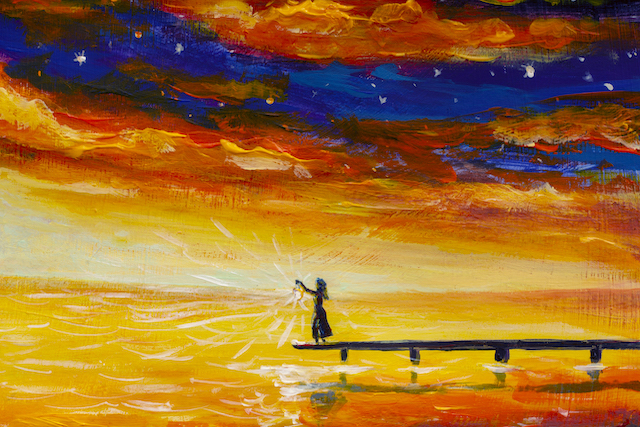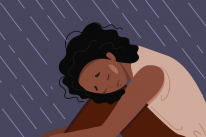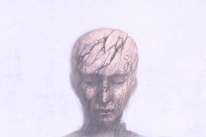
“You can’t be fearful and grateful simultaneously.” ~Tony Robbins
It may be challenging to step into a state of gratitude during a time of tumult and fear. But now, more than ever, we need to practice grace. The practice of gratitude can lift us out from under the heavy weight of our unsavory thoughts and feelings and move us in the direction of loving-kindness.
My Personal Experience with Adversity
I have faced difficult moments in my life. One such time was when I had cervical cancer a few years ago. I remember going through a number of emotions. But when I first heard the diagnosis, I was in shock. It was hard for me to process that my body was sick. I thought I had taken good care of myself, and hearing the “c” word was incomprehensible.
For those who have been or are sick, you’ll know what I mean when I say that I felt alone. Even though I was surrounded by my loving family and friends, it felt like the spotlight was on me and I was the only actor on stage.
And then there was the nagging fear of dying. My father passed from liver cancer ten years earlier, and I thought my fate would be similar. These thoughts gnawed at me throughout the day, especially at night. It was difficult to be present. I was totally consumed by my thoughts.
I also felt hopeless. I couldn’t see past the sickness. My new normal was going to the hospital for radiation and chemotherapy treatments and going home to rest. I lost a lot of weight as a result and became weak. There were times when I was too weak to even leave my bed. My bedroom was my very own shelter-in-place.
And I felt like I lost my independence. I could no longer take care of myself. I had to rely on others, not just doctors and nurses, but also my family and friends, to take care of me. I always thought of myself as self-reliant, so it gutted me to lose that autonomy.
The person who I thought I was started to disappear right before my eyes. In retrospect, I recognize now why the fear was heightened. Part of my identity was attached to my body. If the body fades, then who am I?
How Gratitude Saved Me
I’m not sure at what point during this experience I started to practice gratitude. But this practice, among others, such as mindfulness, saved me.
There was resistance at first. On the day I began my gratitude journey, I asked myself, “What is there to be thankful for in being sick?” What followed was this: “There’s nothing to be grateful for.” I conceded to my ego.
The following day was a little better. I aimed a little lower. I looked for the low-hanging fruit—smaller things that I appreciated, like having the ability to walk even if it was only a short distance, listen to music, breathe, and drink my tea.
Each day I identified what brought me joy, what brought me peace, what made me smile, and what made me see differently.
And from there, I started to look for opportunities to be thankful, whether it was at the hospital or cooped up in my room, or when I couldn’t recognize myself in the mirror because I had lost so much weight, or when the normal that I knew was upended.
Especially during moments of acute fear, I searched deep and long for that tiny scrap of something, anything to drop my gratitude anchor in.
Benefits of Gratitude
The practice of gratitude was important during the time I was sick for a few reasons.
Practicing gratitude brought me into the present moment.
For anyone experiencing adversity, whether it’s an illness, job loss, a broken relationship, or a death, fear is often the ruling emotion. It’s also the most destructive to the mind and body.
When I practiced being in the state of gratitude, it disrupted the fear pattern in my consciousness. A simple gratitude prompt such as “What brings me joy at this moment?” tripped up my ego. This prevented my ego from playing out its catastrophic thought cycle.
When I couldn’t leave my bedroom, I would just look out the window and stare at the trees. I never paid attention to the trees prior to getting sick, but during those times, I noticed how stoic, strong, and beautiful they were.
When I focused on what I appreciated, it made me feel better.
I didn’t know the science behind it at the time, but I felt much better after doing my gratitude exercise, so I kept doing it. I felt better physically and emotionally.
Fearful thoughts have a damaging impact on the mind and body. Fear erodes the immune system and causes cardiovascular and gastrointestinal problems.
Chronic fear also disrupts brain processes, which prevents us from regulating our emotions. This leaves us vulnerable to acute emotions and impulsiveness.
I started to see beyond the physical illness. I became hopeful. My outlook started to change in that I started to visualize myself healthy and physically fit. I used to imagine going on hikes up a mountain and seeing magnificent views at the top.
My gratitude practice made me more resilient.
The more I fostered a grateful disposition, the stronger my mental state became.
There are many studies that show being in a state of gratefulness can lead to mental well-being and resilience.
During the course of treatments, I encountered a few obstacles, such as contracting C. difficile and becoming severely dehydrated. These are common side effects of the treatments. As well, during my medical leave, the company I worked for went through a massive reorganization, and I got reassigned and lost team members.
I took in stride these challenges. I didn’t get knocked off my center. Even in these moments, I looked for the silver linings.
How to Begin a Gratitude Practice
There are many ways to implement a gratitude practice. The easiest requires nothing but changing what you focus on when you wake up in the morning.
Morning Gratitude
1. Upon waking up, do not pick up your phone; instead, take a few deep breaths.
2. Think of three things you’re grateful for. Start with something small, such as being alive, the fact that you can breathe, you have a comfortable bed, you have a roof over your head, etc.
3. If you notice resistance, just become aware of it. Do not force anything.
4. If it’s helpful, you can say, “I’m willing to release the resistance that I have to this gratitude practice.”
5. Perhaps a different prompt might work, such as:
- What is your favorite song and why?
- Look outside the window. What is one thing you see that pleases you?
- Describe who or what makes you feel safe.
- Describe who or what makes you laugh.
- Describe who allows you to be yourself.
You can also apply the exercise above using a journal. I typically write three things I appreciate, and if I have time, I describe why.
Gratitude Rocks
1. Find three small rocks or stones and place them in your jacket pocket. For this exercise, go to a nearby lake or river if it’s available, and look for rocks that call to you.
2. Place these rocks in the pocket of your favorite jacket.
3. Every time you touch these rocks, think of three things you appreciate.
You can also place these rocks on your desk, on the dashboard of your car, or anywhere there is high visibility.
Appreciation Letter
1. Think of someone who’s had a positive impact on your life.
2. Write a letter or email addressing this person.
3. Describe what they did for you that you appreciate.
4. Explain how their action changed the course of your life in a positive way.
5. Send the letter.
When I got better, I took the opportunity to do inner work and self-reflection. I recognized the blessing in getting sick. I saw with clarity the destructive path that I was on prior to the diagnosis, which I was blind to before.
I’d lived a lie. I was in unhealthy relationships. I was in a job that I disliked. I was at the mercy of my thoughts and emotions. I played small. I was inauthentic. And most significant was the recognition that I didn’t love myself.
With the help of a therapist and tools such as meditation and gratitude, I started to release limiting beliefs and reprogram my thinking. I started to see myself in a different light. I began to approach life with joy and optimism. And most importantly, I started to love myself.
What impact has gratitude had on your life?
About Marina Alteza
Marina Alteza is the founder of No Longer Empty where she documents her journey of self-discovery and shares how she transforms her relationship with life challenges using gratitude, self-compassion, and mindfulness. Her site offers tools and resources to help and inspire readers to live and express a fuller and more authentic life.













 Though I run this site, it is not mine. It's ours. It's not about me. It's about us. Your stories and your wisdom are just as meaningful as mine.
Though I run this site, it is not mine. It's ours. It's not about me. It's about us. Your stories and your wisdom are just as meaningful as mine. 